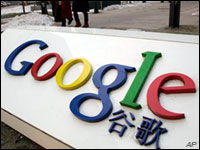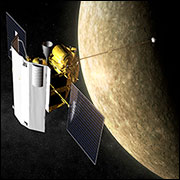
Future generations always hold promise, but for Verizon Wireless, a fourth-generation mobile broadband network is proving both promising — and perilous.
With speeds Verizon promises will be “up to 10 times faster than the company’s 3G network,” the 4G LTE (Long Term Evolution) Mobile Broadband network launches December 5 amid concerns about pricing, access and absence — of a mobile phone counterpart.
PC Magazine reported it hit a download speed of 21 Mbps on Verizon’s 4G LTE network, noting that at that rate, a user could eat up 5 GB of data in just 32 minutes. Comparable third-gen networks operate at roughly 7.2 Mbps.
However, Verizon’s LTE data plans are priced without regard to the need for speed, at US$50 per month for 5 GB and $10 per month for every gigabyte thereafter. Giant bills could be on the Verizon customer horizon.
With two modems to access its new Internet autobahn, Verizon will launch 4G LTE in 38 metro areas and more than 60 U.S. airports. Those markets cover “roughly a third of the U.S. population. That’s over 100 million Americans,” said Verizon Wireless CTO Tony Melone.
However, that coverage may be overly optimistic, and doesn’t yet include all of Verizon’s 3G markets.
Finally, smartphones are left out of this new generation, at least for now. “We expect we will have 4G consumer smartphones by mid-2011,” Verizon 4G LTE National Representative Jeffrey Nelson told TechNewsWorld. “Before then, we expect to do some show-and-tell with smartphone prototypes at the Consumer Electronics Show in January.”
Worries about coverage are unwarranted, according to Nelson. “In our tests, on average, 70 percent of the market populationwas covered. People can also tell very quickly, by typing in a ZIP code on our website, if they will be covered wherever they are.”
Pricing Panic?
With two $99.99 modems — the LG VL600 USB and Pantech UML290 USB — Verizon’s LTE service will cost $50/month for 5 GB or $80/month for 10 GB, both with $10/GB overage charges.
A comparable 3G USB modem plan costs $59.99/month for 5 GB. “We really want to encourage 3G users to come over and try [4G],” Nelson said.
Sticker shock shouldn’t be a problem, he maintained. “Most people who will go on the 4G plan already have a fair amount of knowledge and experience about what to expect.”
Verizon customers also get “plenty of notice about data usage,” added Nelson. “We always provide text notifications at 50, 75, 90 and 100 percent. And our customers can always, always monitor data usage on their own.”
Combined with new and existing regulations that require detailed plan pricing disclosures, such consumer notifications should be adequate to keep bills reasonable, said Frost & Sullivan telecommunications analyst Michael Jude.
“The dynamics are set up so that most people go into data plans like these with their eyes open,” Jude told TechNewsWorld. “What’s more, there’s no ‘killer app’ for 4G that would suck down data tremendous enough to generate an unreasonable bill, so you have to ask yourself, how will customers actually use 4G? Probably doing the stuff they currently do with 3G.”
New Animal?
The 3rd Generation Partnership Project (3GPP), which “unites telecommunications standards bodies,” has a fully functioning website at 3gpp.org titled, “THE 3GPP Mobile Broadband Standard.”
At 4gpp.org, only a tiny placeholder appears, which informally raises a question analysts have been debating: Is 4G for real — or is it a meaningless public relations term?
“No doubt — ‘4G’ has been loosely defined and used by the industry,” said Frost & Sullivan’s Jude.
Gen 4 data networks actually function more like gen 3.5, he said. “For LTE to be true 4G, it would have to be a lot faster.”
Though “a lot of the 4th Generation standards thing is wrapped up in marketing,” Jude said it would be “splitting hairs” to discard the term in favor of something more accurate, like 3.5G LTE.
“LTE is a totally different technology than Verizon’s current network,” he emphasized.
Though he acknowledged the naming issue, Verizon’s Nelson agreed — 4G LTE is a new animal.
“For us, 4G is as generational a shift in the mobile broadband experience as consumers will get,” Nelson insisted. “People can call it ‘LTE,’ ‘4G’ or an ‘Easter bonnet,’ but in the end we think they will simply call it ‘blazingly fast.'”






















































You know what is funny is we keep introducing more ways to eat up bandwidth like movies,facetime and video sharing. But the real perk is that the carrier will be the biggest gainer of this. People are idiots about using cellular broadband and the carriers know this.
I AM staying away from Smartphones until broadband not only gets faster,but much cheaper.